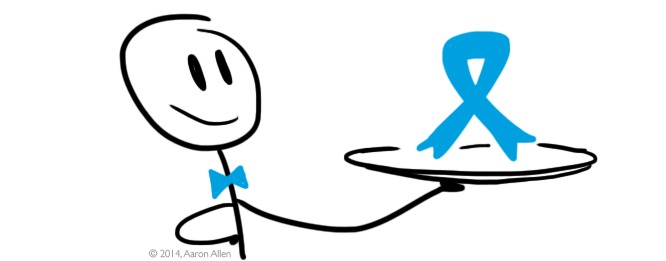A well-executed cause marketing campaign isn’t just a great way to attract guests to your hotel’s restaurant anymore. For many, it has become an integral part of hotel marketing strategy & brand development. Half of consumers believe companies should create a specific product or service with the goal of addressing a social issue. If that’s not a case for cause marketing, we don’t know what is. For hotels, a great place to start is with the F&B department.
In 2013, cause marketing was the third most prevalent type of cooperate sponsorship spending in North America, totaling $1.78 billion. And while we applaud the fact that so many companies are looking for opportunities to be charitable, this also makes it increasingly difficult for your hotel’s philanthropic efforts to stand out — all the more reason to have a cause marketing campaign tailored to fit your hotel marketing strategy.
Simply giving money away to a charity is no longer enough. Guests can do that on their own (and 60 percent of them do). Instead, look for ways to help guests engage in philanthropy by offering them a unique opportunity to give back (and have a good time) at your hotel restaurant.
Cause Marketing — What Exactly are We Talking About?
Cause marketing is a strategy where hotels partner up with a charitable organization. The idea here is that each organization has something that will make the marketing campaign successful: hotel restaurants have the infrastructure and customer base to pull off a major event, and charities have a cause that will make dinner and drinks special.
Paying it Forward Pays Off for Your Hotel
Ultimately, the goal here is to raise funds for the non-profit organization, but there’s no reason your hotel shouldn’t benefit from the arrangement, especially since 76 percent of consumers believe that it’s okay for a company to make a profit while supporting a charity.
Cause marketing allows your hotel to demonstrate that it is a community-minded business with a commitment to helping others — and that’s key for neighborhood marketing. Cause marketing also offers the opportunity to boost your brand awareness and essential factor for the success of your hotel marketing plan. Since 2008, the impact of purpose in purchasing decisions (i.e. eating out at a restaurant specifically because it supports a charity) has increased 26 percent — a growth that outpaces design, innovation, and even brand loyalty.
Most importantly, cause marketing attracts customers who are willing to spend more for a good cause.
Yes, Cause Marketing Attracts Customers
We’re not making this up, and the trend isn’t specific to the U.S. Research shows 91 percent of global consumers tend to switch brands to support companies tied to a charity. A further 50 percent of consumers across the globe (6 percent more than the U.S. average) are willing to spend more on a product associated with philanthropy.
Millennials are a particularly important demographic for cause marketing because that generation is focused on conveying personal image through purchasing decisions. Half of Millennials say they buy a product because it reflects their personal style, and 45 percent say they’re more likely to support a brand that supports a charity.
Customers are also regularly purchasing products associated with a charity. Globally, 47 percent of consumers buy from philanthropic brands at least once a month. Why not encourage guests to do the same by regularly partnering with charities to host events?
One of our favorite things about cause marketing is that guests are willing to become active participants. Across the globe, 71 percent of consumers report they would be willing to promote a brand’s cause marketing efforts. Nearly three-quarters of customers also say they’d recommend a philanthropic brand to friends.
We already know that social media is fast becoming one of the most effective ways for hotels to connect with guests. The same is true for cause marketing. In the U.S., 51 percent of consumers use social media to interact with a company’s cause marketing campaign.
A Few Quick Pointers:
DO connect with a charity that has a strong neighborhood presence. In the U.S., 43 percent of consumers want to see a company’s charitable efforts impact their community.
DO give guests the opportunity to give more. At Tabla in NYC, the restaurant participates in many Share Our Strength events (like the Great American Dine Out) where a portion of every meal’s proceeds go to charity. To take the giving one step further, the restaurant has also included a charitable “tip” section on every bill, allowing customers to give more. To date, the philanthropic “tips” have raised nearly $55,000.
DON’T limit yourself to gender-specific campaigns. While nine of 10 mothers in the U.S. prefer to buy a charitable product, across the globe more men (53 percent) say they’d be willing to spend more on philanthropic goods, compared to 47 percent of women.
DO show how your hotel’s efforts are making a difference by keeping your guests informed. While 88 percent of consumers want to learn about a company’s charitable acts, only 25 percent actually feel that their financial contributions are making an impact. Get that number up by showing guests what “helping” looks like.
DO make use of social media. During the Welch’s Pass the Glass campaign, for every Vine video of customers sharing a beverage, Welch’s donated a bottle of sparkling grape juice to Family-to-Family, a national non-profit hunger-relief organization.
DON’T just pick any charity — make sure that your F&B program is connecting with a cause that is relevant to your hotel. When KFC partnered with Komen back in 2010 with its Buckets for the Cure campaign, both companies received a good bit of criticism. While the online community applauded the chain’s efforts to give back, not everyone agreed that a fried chicken restaurant was the best advocate for an illness linked to obesity.
DO make sure that your staff is actively involved in your cause marketing campaign. Not only do 57 percent of employees prefer to work for a charitable company, but their efforts can make or break a campaign.
Case in point: the Panera Bread Company’s Meal of Responsibility program (where customers pay what they can for a bowl of turkey chili) was canceled not because the company was losing money, but because staff stopped explaining the concept to customers, said founder Ron Shiach.
DO be honest about your donations. Customers were not happy to learn that a McDonald’s advertisement stating “every time you get a Happy Meal or Mighty Kids Meal, some of the money goes to Ronald McDonald House Charities to help lots of kids and families” actually meant that one penny was donated per purchase.



